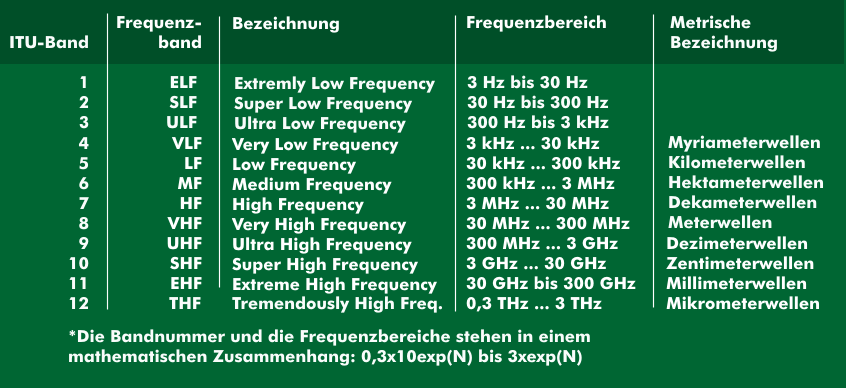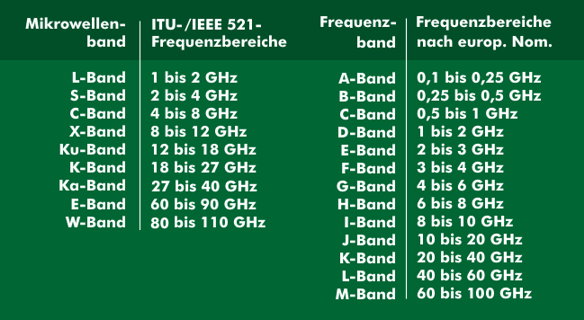frequency band
A frequency band is a contiguous frequency range characterized by the same transmission properties as wave propagation with its diffraction, refraction, reflection and free space attenuation. Frequency bands are determined by the lower and upper frequency.
The International Telecommunication Union( ITU) and the Federal Communications Commission( FCC) have divided the entire available frequency range from 3 Hz to 3 THz(terahertz) into decadal frequency bands and identified them by designations and band numbers. The band numbers of the frequency bands then range from 1 to 12 and have a direct mathematical relationship to the frequencies of the frequency bands. An example of this designation is the UHF band, which lies between 300 MHz and 3 GHz and has the band number 9.
In certain frequency ranges, the frequency bands are also identified by Greek numerals, such as the frequency bands for radio and television, or by letters, such as the microwave bands. From the designation of the microwave bands, no conclusions can be drawn about the frequencies of the corresponding frequency band.
The designation of the frequency bands
The different designations of the frequency bands have a historical background. While in Germany the traditional nomenclature of the IEEE is still used, there is another one from NATO, which is used throughout Europe. It can be recognized by the fact that the frequency bands are listed in alphabetical chronology, i.e. they are designated by letters, starting with the A band, followed by the B band, etc., and ending with the O band. The frequency band boundaries according to the NATO nomenclature are approximately logarithmic.
FRrequency bands are defined in their frequency ranges by the lowest and highest frequency. Since some frequency bands in the IEEE nomenclature have an extremely large frequency range, they have been subdivided into sub-bands, including the K-band, the S-band and the X-band.
The most important frequency bands for satellite communications are the L-band from 1 GHz to 2 GHz, which uses decimeter waves, the S-band from 2 GHz to 4 GHz, and the K-bands, which are in the frequency range from 12.5 GHz to 40 GHz. In addition, the 60 GHz band is playing an increasingly important role in IEEE radio networks and radio transmissions.



